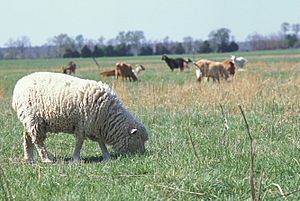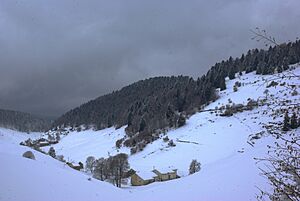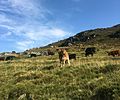Pasture facts for kids
A pasture is a special area of land where animals like sheep and cattle can eat grass and other plants. It's like a natural buffet for farm animals! Farmers use pastures to feed their livestock, which are then often raised for food like meat or milk.
What is a Pasture?
A pasture is usually covered with different kinds of grasses and herbs. Animals, especially those that eat plants (called herbivores), spend their time grazing here. Grazing means they walk around and eat the plants directly from the ground.
Pastures are important for farming because they provide a natural and often cost-effective way to feed animals. They are also good for the environment when managed well, helping to keep the soil healthy.
Types of Pasture Areas
Many different types of natural areas can act as pastures. They all share the common feature of having plenty of plants for animals to eat. Here are some examples:
- Grassland: Large areas covered mostly by grasses.
- Heathland: Open areas with low-growing shrubs and grasses.
- Moorland: Often found in uplands, with heather and coarse grasses.
- Prairie: Flat, wide grasslands, especially in North America.
- Rangeland: Large, open areas where animals roam freely to graze.
- Savanna: Grasslands with scattered trees, common in warm climates.
- Steppe: Dry, grassy plains, often found in cooler regions.
Images for kids
-
Mountain pasture in Switzerland
-
A pasture in the East Riding of Yorkshire in England
See also
 In Spanish: Pasto (ganadería) para niños
In Spanish: Pasto (ganadería) para niños







